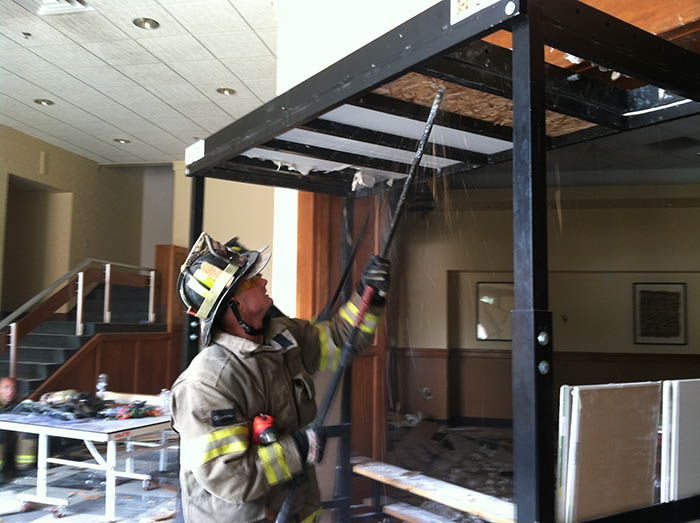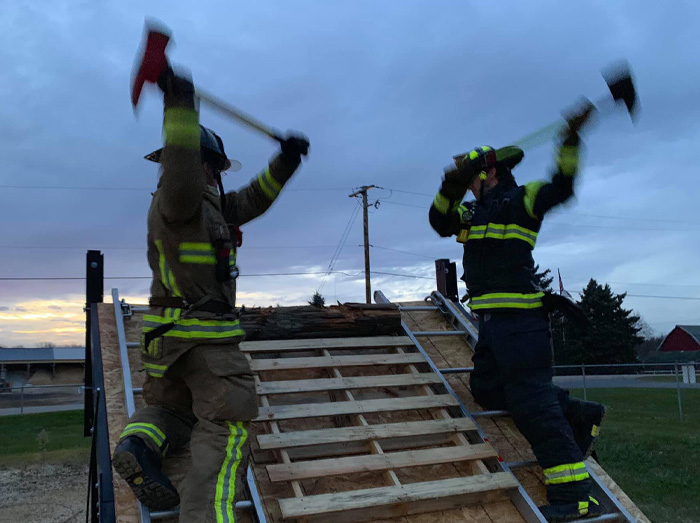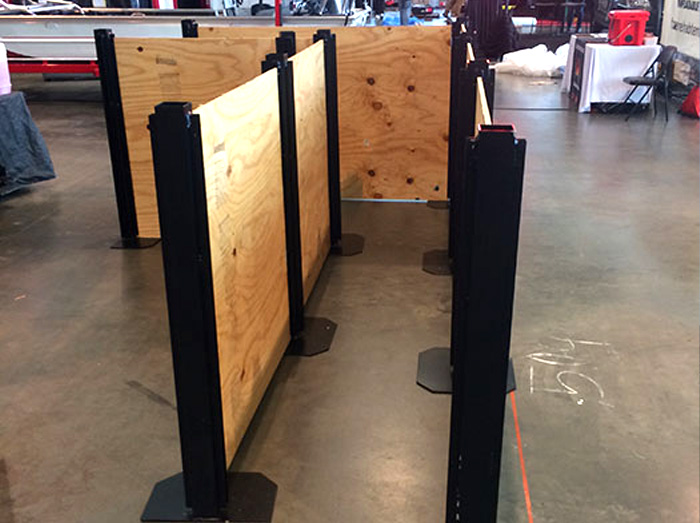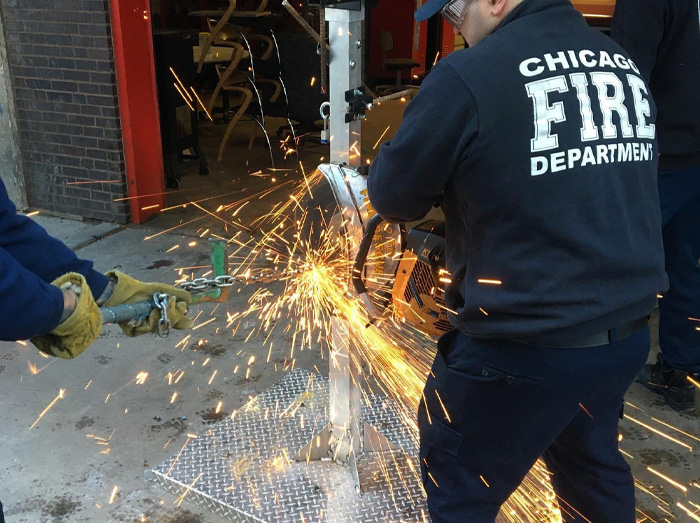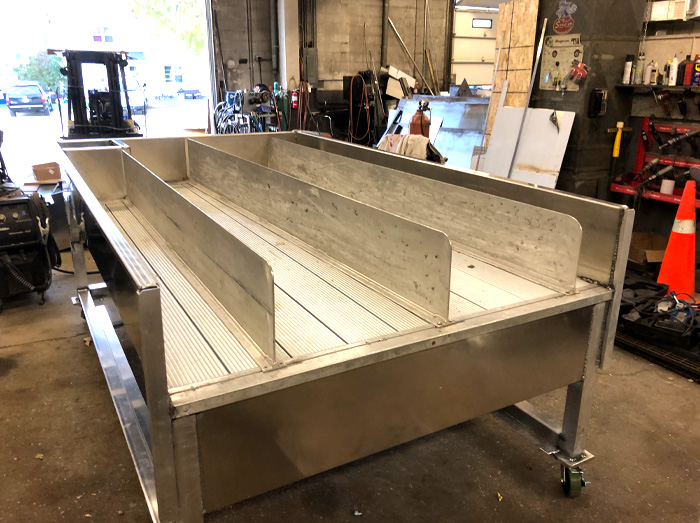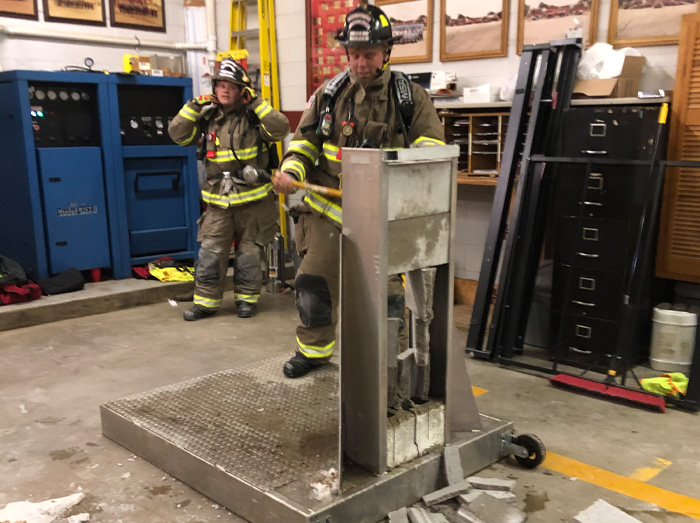King Training Innovations

FIREFIGHTER TRAINING DRILL: THE "OUTBOARD" FORCIBLE ENTRY SAW
By Danny Troxell
Most gasoline-powered rotary "cut-off" saws that are marketed to the fire service come standard from the factory with the blade mounted on the "inboard" side of the saw. While this is fine for saws set up for roof operations (carbide-tipped blade), saws that are set up for forcible entry operations with an aluminum oxide or diamond-segmented blade can be made infinitely more useful by moving the blade to the outboard side of the saw.
Outboard saws can be placed almost flat on a surface, thus allowing flush cuts to be made in many forcible entry situations. Converting a saw from inboard to outboard is a fairly simple operation that can be done in the firehouse with simple tools. This drill contains the steps of operation to perform this conversion that are applicable to most brands of saws currently on the market.
Download this firefightertraining drill as a PDF HERE (528 KB).
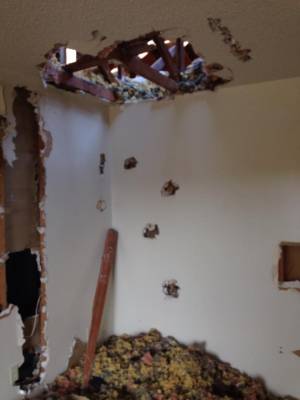
Here is a picture from training. Tell me what you think is going on here.





Below is an article from Lt. Isaac Frazier, St. Johns County F.D. Florida. Good read. Sawzalls are a great tool that are becoming more and more functional for numerous scenarios. Whether its extrication, or even fire ground operations they are a useful and effective tool. With the proper training and familiarity you can accomplish allot of work rather quickly. Get your hands on your companies tools, think outside the box, and continue to train. Stay safe.
Chris
Extrication "Quick Tip" #23 (Guardrail Entrapments)


DRILLS: TRUCK COMPANY WORK
Truck company functions--from forcible entry to vertical ventilation to search--are critical for success on today's fireground. Below are links to an assortment of drills from Forest Reeder reviewing some basic truck company skills that you can use to train your companies.
For more firefighter training drills, go to http://www.fireengineering.com/training/drills.html.
Drill of the Week: Ground Ladder Rescue
Ladder rescue skill requires swift and efficient movement and coordination by all members of the rescue team.
Vertical Ventilation is an important task for the TRUCK CO. Safety always needs to be our #1 prority. Be familiar with building construction, fire behavior and laddering. 2 means of egress is a must. Coordinated fire attack with proper placement of your ventilation hole will help prevent fire spread and will also make the interior crews happy with a better environment.
Vertical ventilation: One of the fireground's most hazardous tasks
Vertical ventilation should only be accomplished when it is necessary, can be completed safely with 2 means of egress
By Michael Lee
Vertical ventilation is one of the most hazardous tasks accomplished on the fireground. Vertical ventilation should only be accomplished when it is necessary and can be completed safely.
The key to success in delivering this tactic is to have two means of egress, limit total time of work on roof, don't let the ventilation hole get between you and your means of egress and don't loiter to admire your work when complete!
Vertical ventilation can be accomplished by utilizing existing openings in the roofing deck or making our own.


